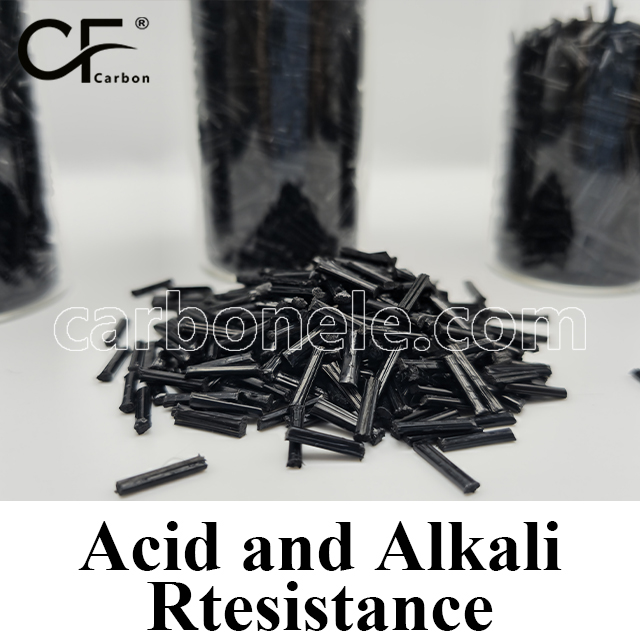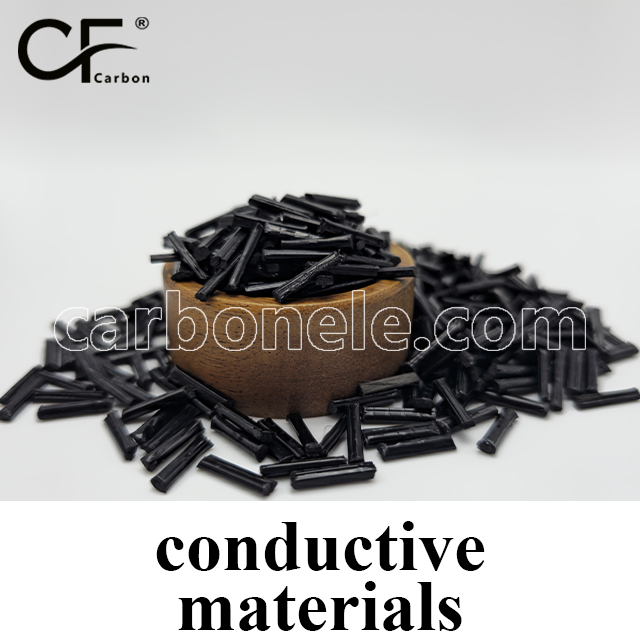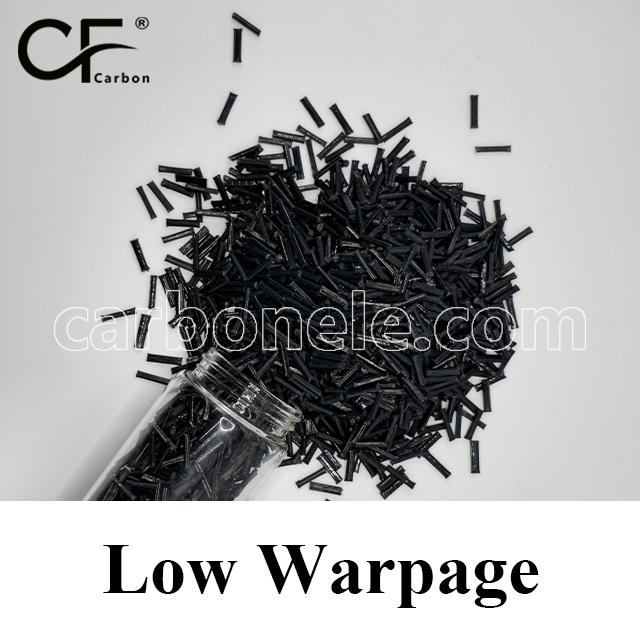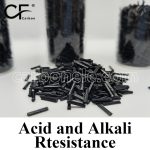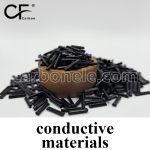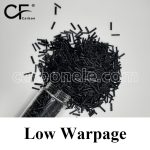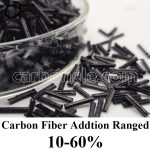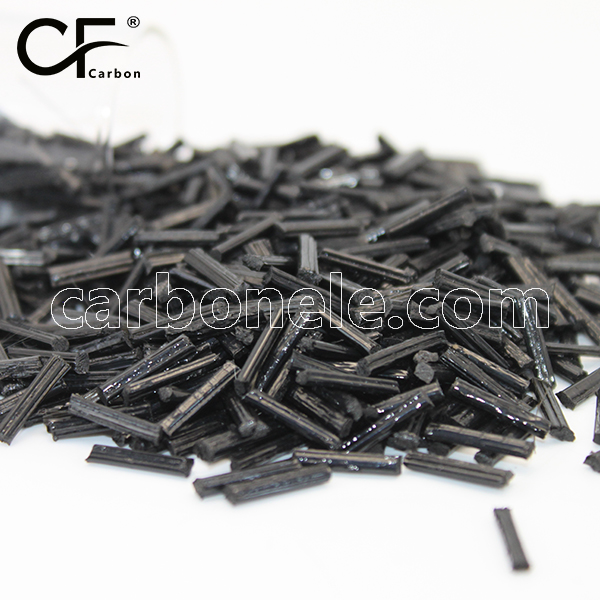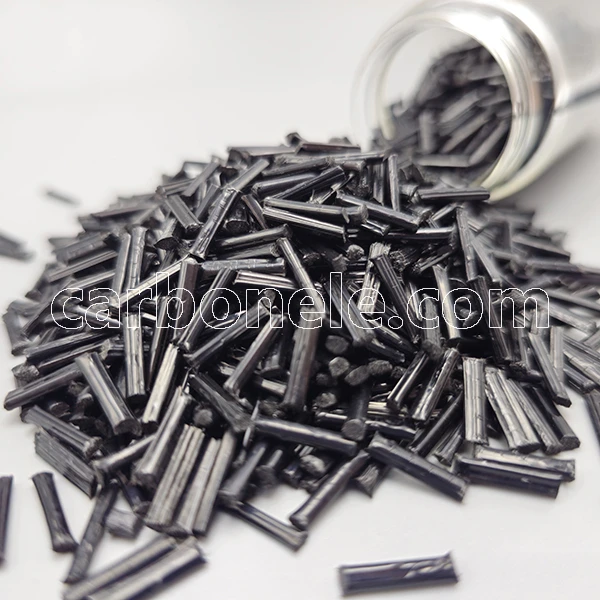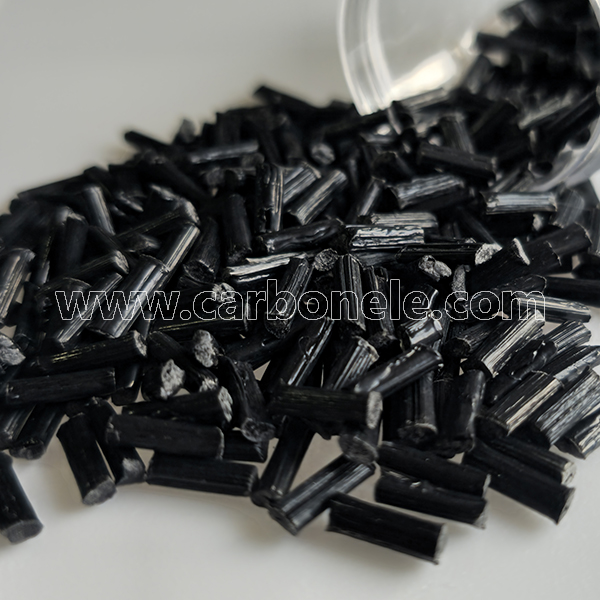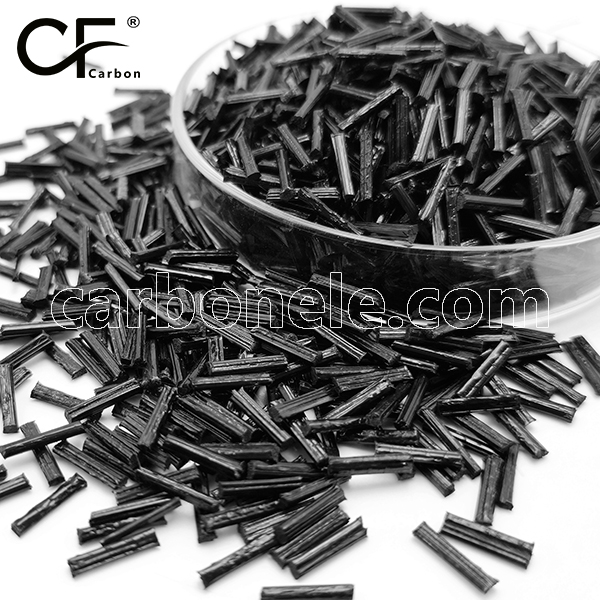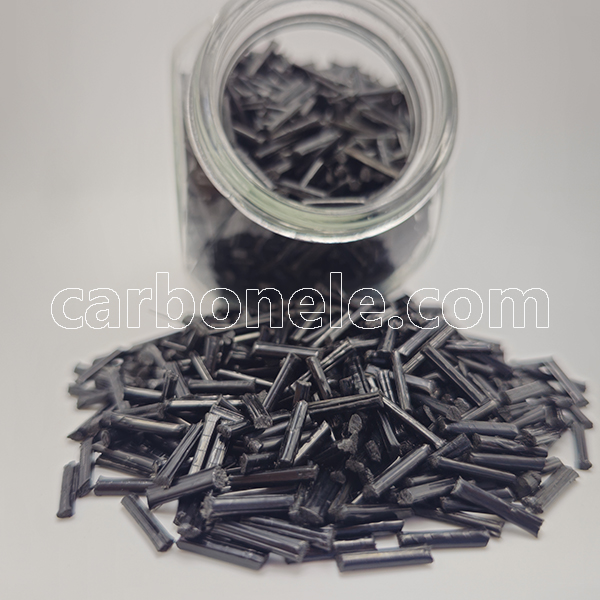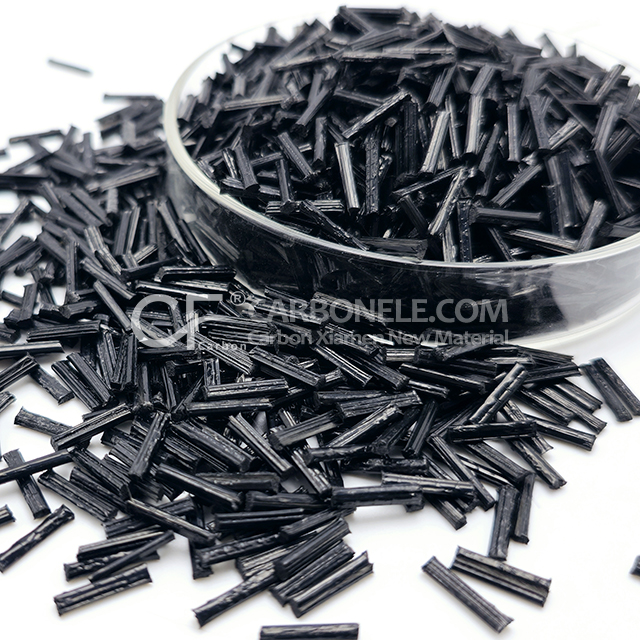PA6-LCF50 is a high performance PA6 composite reinforced with 50% long carbon fiber, offering exceptional strength, stiffness, and fatigue resistance, making it ideal for demanding structural applications. With excellent heat resistance (HDT approx. 155°C), very low water absorption, and outstanding wear resistance, it is a perfect lightweight alternative to metal.

Heat-resistant PA6-LCF50 for structural applications
- Model number: PA6-LCF-BCA5
- Matrix Resin: Nylon6 (Polyamide6) (PA6)
- Reinforcing Filler: Carbon fiber
- Appearance: Granules
- Grade: Injection/extrusion grade
- Packaging: 25kgs/bag
Mechanical Properties
PA6-LCF50 is an ultra-high performance polyamide 6 (PA6) composite reinforced with 50% long carbon fiber (LCF), offering maximum strength, stiffness, and structural endurance. The high LCF content delivers exceptional load-bearing capacity, dimensional stability, and resistance to fatigue and mechanical shock under extreme operating conditions.
Tensile Strength: ≥ 175 MPa
Flexural Strength: ≥ 260 MPa
Impact Strength: ≥ 15 kJ/m²
With 50% long carbon fiber, PA6-LCF50 provides superior rigidity and impact resistance, making it ideal for metal replacement in demanding structural applications.
Thermal and Chemical Resistance
PA6-LCF50 maintains exceptional mechanical performance at elevated temperatures and offers long term resistance to chemically aggressive environments.
Heat Deflection Temperature (HDT): Approx. 155°C
Long Term Service Temperature: Up to 140°C
Chemical Resistance: Excellent resistance to oils, fuels, greases, and weak acids; moderate to alkalis; not suitable for strong acids or oxidizing agents
Its high thermal stability ensures reliable performance in under hood automotive and heavy industrial environments.
Wear Resistance and Processing
The 50% long carbon fiber reinforcement significantly improves wear resistance, dimensional precision, and fatigue strength, even under continuous stress and motion.
Wear Resistance: Extremely high – ideal for high load/friction scenarios
Processing Methods: Injection molding (requires long fiber feeding systems), compression molding
Processing Notes: Low shear processing is essential to preserve fiber length; hardened steel tooling is recommended due to the abrasive nature of the material
Environmental Adaptability
PA6-LCF50 offers extremely low moisture absorption and maintains excellent dimensional stability in fluctuating humidity and temperature conditions.
Water Absorption: Substantially lower than standard PA6
Dimensional Stability: Outstanding – ideal for tight tolerance applications in harsh climates
Applications
PA6-LCF50 is designed for extreme structural performance where weight reduction, strength, and long term durability are essential. It is suitable for advanced automotive and industrial applications, including:
Automotive:
Structural chassis elements
Engine bay and underbody mounts
High strength brackets and load bearing frames
Industrial:
Heavy duty machine arms and supports
High fatigue robotic structures
Precision structural housings and guides
Summary Table for PA6-LCF50
| Characteristic | Value/Description |
|---|---|
| Carbon Fiber Content | 50% (Long Carbon Fiber) |
| Tensile Strength | ≥ 175 MPa |
| Flexural Strength | ≥ 260 MPa |
| Impact Strength | ≥ 15 kJ/m² |
| Heat Deflection Temp. | Approx. 155°C |
| Long Term Service Temp. | Up to 140°C |
| Chemical Resistance | Excellent, except strong acids/oxidizers |
| Water Absorption | Lower than standard PA6 |
| Processing Methods | Injection molding, compression molding |
| Wear Resistance | Extremely high – for severe structural applications |
If you want to get more information about PA6-LCF50, you can vist our Youtube.
Strength Comparsion PA6 and PA6-CF
PA6-CF, reinforced with carbon fiber, exhibits significantly higher strength and stiffness compared to unfilled PA6. While standard PA6 offers good toughness and moderate mechanical properties, the addition of carbon fiber enhances tensile and flexural strength, improving load-bearing capacity and dimensional stability. PA6-CF also has lower creep and reduced thermal expansion, making it more suitable for high performance applications where strength and rigidity are critical. However, PA6 retains better elongation and impact resistance, making it more flexible and less brittle under sudden loads.



Frequently Asked Questions
Carbon (Xiamen) New Material Co., Ltd. aims to provide buyers with "one-stop" worry-free high-quality services. Here you can find all information about carbon fiber engineering plastics. If you still have questions, please send us an email for consultation!
-
How can I contact the manufacturer of a product that interests me?
When you find a product you are interested in, you can contact the manufacturer directly by sending an email and we will get back to you as soon as possible.
-
How do I find the products that interest me?
All you need to do is enter the keyword, product name in the search window and press the Enter key on your keyboard. Your search results page will then be displayed. You can also search within the product category pages on the home page. Each category is divided into subcategories, allowing you to refine your search and find products that interest you.
-
Where will I find a buying guide?
Please contact our after-sales service directly and we will provide you with a comprehensive operating guide.
-
What are CF Reinforced Thermoplastic Composites?
CF Reinforced Thermoplastic Composites are materials where carbon fibers are incorporated into a thermoplastic matrix. They combine the strength and stiffness of carbon fibers with the processability and recyclability of thermoplastics. For instance, they are used in automotive parts like bumper beams.
-
What are the benefits of CF Reinforced Thermoplastic Composites over traditional composites?
The key benefits include faster production cycles, easier recyclability, and better impact resistance. They also offer design flexibility. An example is in the manufacturing of consumer electronics casings where complex shapes can be achieved more easily.
-
How are CF Reinforced Thermoplastic Composites processed?
Common processing methods include injection molding, extrusion, and compression molding. Injection molding is widely used for mass production. For example, in the production of small components for the medical industry.
-
What industries use CF Reinforced Thermoplastic Composites?
They are utilized in aerospace, automotive, medical, and sports equipment industries. In aerospace, they can be found in interior components. In the medical field, they might be used in prosthetics.
-
How does the carbon fiber content affect the properties of the composites?
Higher carbon fiber content generally leads to increased strength and stiffness but may reduce ductility. A moderate content is often balanced for specific applications. For example, a higher content might be preferred in structural parts of a race car.
-
What are the challenges in using CF Reinforced Thermoplastic Composites?
Challenges include higher material costs, complex processing equipment requirements, and ensuring uniform fiber dispersion. Issues with adhesion between the fibers and the matrix can also arise. An example is in achieving consistent quality in large-scale production.








